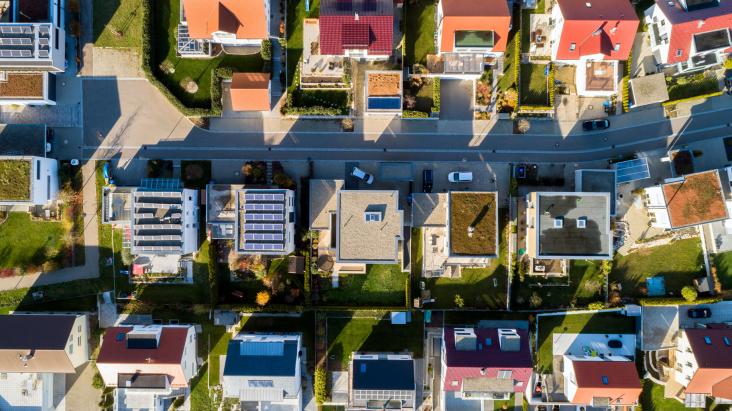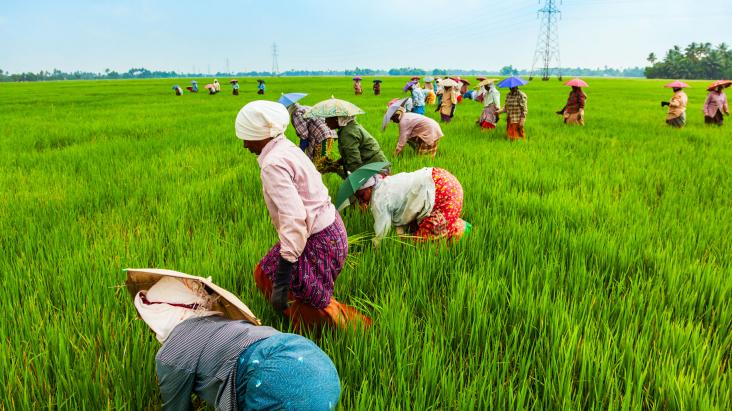Nature
Nature-based solutions—solutions that involve working with nature to address societal challenges—have gained momentum as a tool that can deliver multiple benefits.
The benefits of nature are far reaching—from providing clean air and water to ensuring protection from flooding and creating cooling effects within our urban landscapes. That is why we work with nature to help address the impacts of climate change, biodiversity loss, and many other threats to a sustainable future.
Here at IISD, we explore the holistic value of nature through the lens of sustainable development, building an evidence base that can mobilize practical approaches to address these challenges.
We work with governments, international agencies, civil society, and other stakeholders to advance nature-positive outcomes that support and benefit both people and ecosystems while always ensuring these efforts include and benefit everyone.
Most of this work focuses on building more nature-based infrastructure to support growing environmental, societal, and economic needs, as well as tapping into ecosystems to help build resilience for the ever-intensifying impacts of climate change.
Nature-Based Infrastructure
Nature-based infrastructure, also known as natural infrastructure, is a way to plan and work with nature to meet our infrastructure needs. While these infrastructure projects are designed to fulfill specific goals, they can also generate a host of other social, economic, and environmental benefits that go beyond what traditional engineered or "grey" infrastructure can provide. Our research shows that nature-based infrastructure is often more cost-effective than traditional alternatives.
With the Nature-Based Infrastructure Global Resource Centre, we bring together key partners to establish a business case for nature-based infrastructure. We provide data, training, and customized infrastructure project valuations based on the latest innovations in systems thinking and financial modelling.
In the Canadian context, IISD's Natural Infrastructure for Water Solutions initiative is working to scale up natural infrastructure on Canada's Prairies for cleaner water and more resilient communities. Our Canada-based work also includes conducting research at the IISD Experimental Lakes Area to improve our understanding of human impacts on the environment, influence policy and environmental best practices, and support public awareness.
Nature Building Resilience to the Impacts of Climate Change
We also highlight the role of nature in building resilience to climate change. Our Nature for Climate Adaptation Initiative provides knowledge and capacity development opportunities in the form of guidance, events, and a massive open online course to enhance the implementation of nature-based climate solutions that provide benefits for biodiversity and people of all genders and social groups.
As the host of the secretariat of the National Adaptation Plan (NAP) Global Network, we explore how NAP processes present a strategic opportunity to raise the profile of nature-based solutions as an essential approach to adaptation at scale.
Related Projects

The Nature-Based Infrastructure Global Resource Centre
The leading global hub for nature-based infrastructure (NBI). Together, we can help build a better, fairer, and more sustainable future through NBI projects.

Climate Adaptation and Protected Areas (CAPA) Initiative
The Climate Adaptation and Protected Areas (CAPA) Initiative aims to use nature-based solutions (NbS) to strengthen climate resilience and protect biodiversity in and around protected areas.

Natural Infrastructure for Water Solutions (NIWS)
Natural Infrastructure for Water Solutions (NIWS) is taking natural infrastructure from novel to normal. NIWS is scaling up natural infrastructure on Canada's Prairies—for cleaner water and more resilient communities. Natural infrastructure allows us to plan and work with nature to help meet infrastructure needs. NIWS hopes to take the idea of natural infrastructure from novel to normal, championing water infrastructure solutions in rural communities, cities, and government planning processes.

Nature for Climate Adaptation Initiative
A new initiative aims to support nature-based climate action that protects livelihoods and biodiversity in the most vulnerable parts of the world.

The Sustainable Asset Valuation (SAVi)
IISD developed the Sustainable Asset Valuation (SAVi) to demonstrate to governments, investors and citizens why sustainable assets can deliver better value for money and more attractive internal rates of return.

SUNCASA | Resilient Cities. Natural Solutions.
Scaling Urban Nature-based Solutions (NbS) for Climate Adaptation in Sub-Saharan Africa (SUNCASA) aims to enhance resilience, gender equality, social inclusion, and biodiversity protection in urban communities in Ethiopia, Rwanda, and South Africa.

The State of Sustainability Initiatives (SSI)
Increasing market access of small-holder farmers, fostering gender equality and contributing to environmental conservation by leveraging voluntary sustainability standards.

ALivE - Adaptation, Livelihoods and Ecosystems Planning Tool
ALivE is a tool designed to help organize and analyze information to plan effective ecosystem-based adaptation.

Planting for Resilience
Scaling Up the Adoption of Ecosystem-Based Adaptation Using Behaviour-Centred Design: The case of vetiver grass for riverbank erosion control in Fiji
Floating Treatment Wetlands
Floating treatment wetlands allow aquatic plants to grow in water that is typically too deep for them and transform pollutants into harmless by-products.

AQUA-Pearl
A new project will help communities in Fiji build their resilience to climate change through nature-based approaches to oyster aquaculture.
New Work

Climate Risk Profile—Fiji
This climate risk profile provides an overview of the Fiji's climate context, observed and projected climate change impacts, and a set of recommended NbS for adaptation actions and measures to promote gender-responsive and socially inclusive climate adaptation.

Funding the Future
Practical recommendations for federal infrastructure programs with 14 criteria to better enable natural infrastructure in Canada.

Building the Business Case for Biodiversity Credits: Hybrid financing solutions for scalable conservation
From ecosystems to species and genetic diversity, the health of the planet’s biodiversity is essential to sustaining human life but remains severely underfunded. David Kramer examines how biodiversity credits can help bridge the financing gap.

Advancing Gender-Responsive and Socially Inclusive Practices in Nature-Based Solutions for Adaptation
Get inspired by two nature-based solutions for climate adaptation projects that integrate gender equality and social inclusion considerations at various stages of implementation.

Sustainable Asset Valuation of Nature-Based Flood Mitigation Infrastructure in Drakenstein, South Africa
This report analyzes the social, economic, and environmental value of river restoration in Drakenstein Municipality.

Challenging Gender Discriminatory Norms, Practices, and Beliefs in Sub-Saharan Africa
SUNCASA held a series of training sessions to support women and other underrepresented groups in overcoming the barriers preventing their access to natural resources and meaningful participation in nature-based solutions governance.
Latest
You might also be interested in

Climate Change Adaptation
As climate risks escalate, we help governments and communities anticipate, cope, and adapt.

Climate Change Mitigation
Tackling climate change requires urgently reducing greenhouse gas emissions to minimize the impacts on our societies, economies, and ecosystems.

Food and Agriculture
IISD is working to ensure agriculture and food systems advance sustainable development.

Infrastructure
Infrastructure is the backbone of sustainable development and a powerful driver of economic activity.

Just Transition
In the transition to clean energy, a just transition can minimize negative impacts and maximize positive opportunities.

Water
Human activity—from pollutants to climate change—is threatening the health of our planet's precious freshwater resources. That's where we come in.




